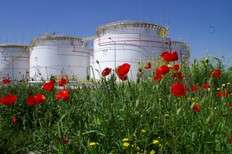- The new phenol complex will produce 200,000 metric tons per year.
- UOP will provide a cumene unit and a phenol unit with alpha methyl styrene hydrogenation.
- The technologies will extend benzene production into phenol and acetone derivatives.
- UOP Q-Max and Phenol 3G technologies are currently licensed in multiple units worldwide.

Project Overview
Honeywell announced that PKN ORLEN will use UOP Q-Max™ and Phenol 3G technologies to produce 200,000 metric tons of phenol annually at its Płock, Poland facility. UOP will provide a license for the technology, basic engineering design services, key equipment, catalysts, adsorbents, and technical services.
Technological Integration
As part of the project, UOP will supply a cumene unit and a phenol unit with alpha methyl styrene hydrogenation. This integration will enhance PKN ORLEN's market position in high-margin petrochemicals, including phenol and acetone.
Production Capabilities
The UOP Q-Max process converts benzene and propylene into high-quality cumene at low benzene-to-propylene ratios, using regenerable catalysts that reduce byproduct transalkylation catalyst requirements and lower utility consumption. The UOP 3G Phenol unit converts cumene into phenol with high yields and product quality, and low utility consumption.
Market Impact
These technologies will enable PKN ORLEN to extend its benzene production into phenol and acetone derivatives, meeting growing demand in Poland and potentially becoming a net exporter. The integrated technologies offer lower utility consumption, high phenol yield, and excellent operating flexibility, reliability, and safety.
Global Reach
UOP Q-Max technology is currently licensed in 26 units worldwide, with a total capacity of over 9 million tons per annum. The UOP phenol technology is licensed in 22 units globally, with a total phenol capacity of over 5 million tons per annum.
